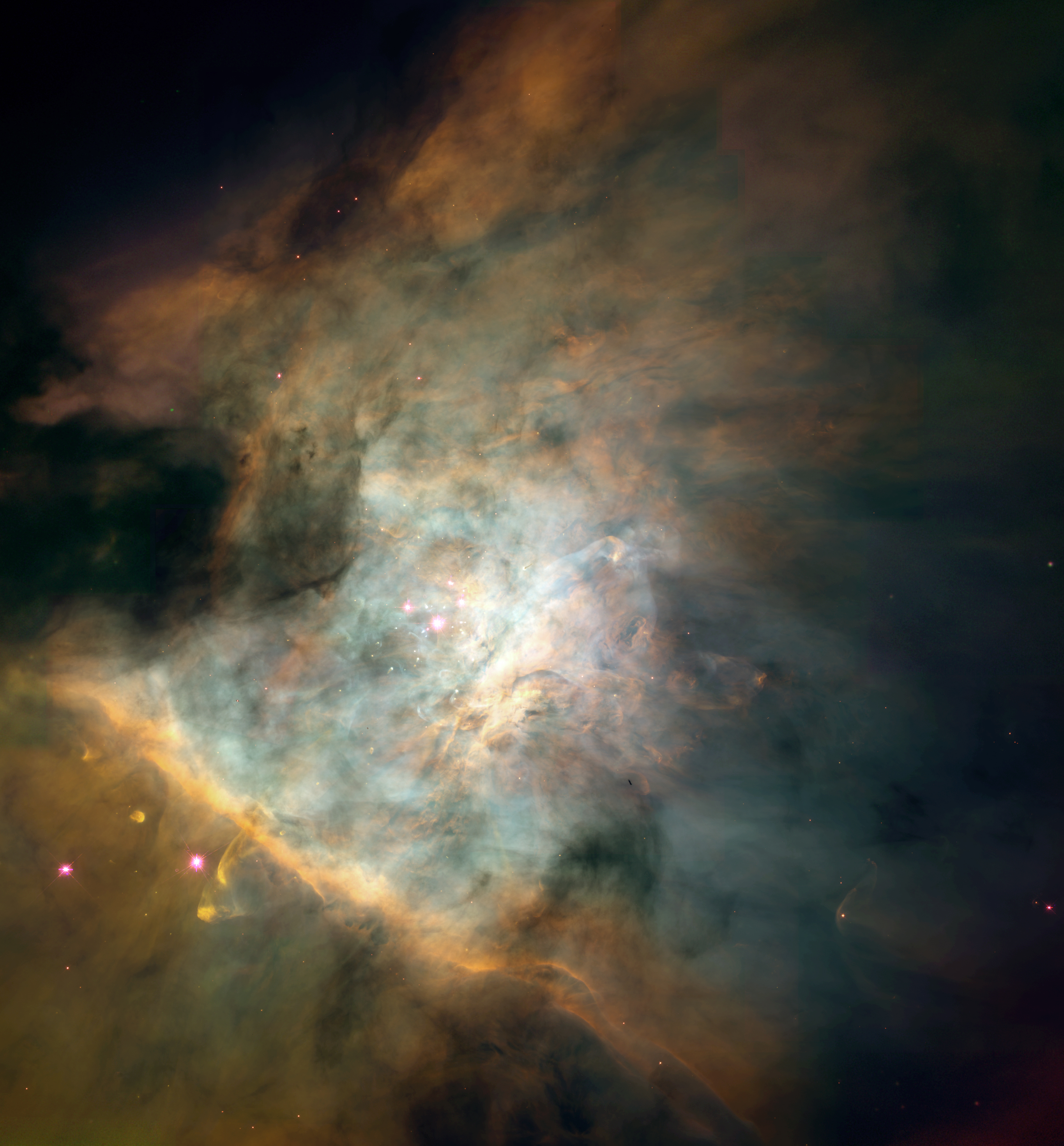
Caption: A section of the Orion Nebula with protoplanetary disks from HST.
The Orion Nebula is in sword of Orion about 1,500 lyr (about 500 pc) away. It is the most conspicuous star formation region on the sky. Star formation occurs in clouds of gas and dust.
This image is about 2.5 lyr wide and is only a small section of the Orion Nebula.
Hot young, massive stars are dispersing this part of the Orion Nebula and making it bright rather than dark via reflection and induced emission. The dispersal tends to turn off star formation. Star formation is complicated by these complex feedback mechanisms. In particular, note the Trapezium, a 4-star asterism near the center.
Protoplanetary disks are around youngs stars. In the image there are more than about 150 of them.
The obvious ones are near the Trapezium and have tails. Radiation pressure (i.e., EMR pressure) from the Trapezium and other Trapezium cluster is blowing away some of the gas and dust that forms the protoplanetary disks.
True colour? False color? The official caption doesn't tell, but I assume that the colors have been enhanced to bring out details even if they are more or less true.
Credit/Permission: NASA,
1995 /
Public domain.
Download site: NASA: image #PR95-45A.
Image link: Itself.
Local file: local link: nasa_orion_nebula_001.html.
File: Star Formation file:
nasa_orion_nebula_001.html.